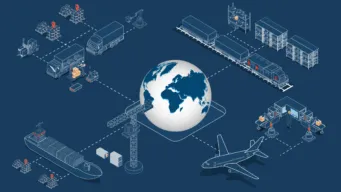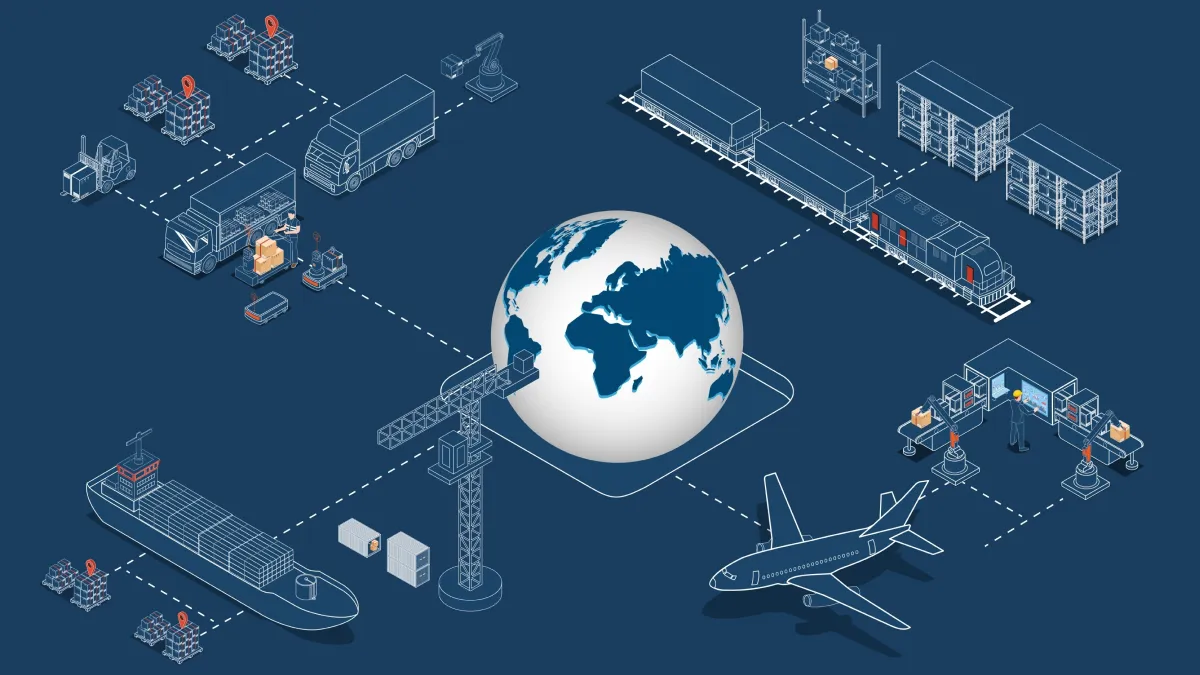From crisis to confidence: how government agencies build resilient supply chains
Blog: OpenText Blogs

The COVID-19 pandemic exposed critical gaps in government supply chain visibility.
Billions were spent on medical supplies while lacking real-time tracking of deliveries, quality, or fraud prevention. When the estimated need for N95 respirators hit 3.5 billion units, the actual US stockpile contained just 30 million. That's less than 1% of what was needed.
We all saw the consequences play out in real time: healthcare workers reusing masks, states competing for supplies, and billions flowing to vendors with little accountability. The pandemic didn't create these vulnerabilities; it simply revealed what was already broken.
Today, as agencies work to strengthen their supply chains, they face new pressures: geopolitical tensions, more frequent climate-related disasters, and complex global procurement networks. The question isn't whether another crisis will test government supply chains. It's whether your agency will be ready when it does.
The multi-billion-dollar wake-up call: why traditional procurement fails under pressure
Here's the uncomfortable truth: Traditional government procurement processes, built over decades in departmental silos, break down during emergencies. As recent analysis shows, agencies struggled with supply chain coordination during COVID-19 because data are often stored in silos, which prevents interoperability.
Consider the complexity facing the Department of Defense (DOD). The DOD alone works with over 200,000 suppliers involved in manufacturing everything from advanced weapons to non-combat goods. Yet, a 2025 GAO report found that efforts to improve supply chain transparency remain uncoordinated across the department.
This lack of coordination is a significant issue because subcontracting, material costs, and transfers between companies account for more than 80% of total direct costs. Without visibility into these deeper tiers, agencies are operating with a critical blind spot that is both financially inefficient and a national security risk.
The Real-World Pain Points:
- Procurement officers lost visibility into vendor performance during critical periods.
- Emergency managers couldn't track essential supplies in real-time or across agency lines.
- Audit directors faced incomplete records for billions in emergency spending, making post-crisis verification nearly impossible.
Traditional procurement processes—built on periodic reporting, manual tracking, and phone calls—simply buckle when demand surges or when documentation requirements multiply.
How modern track & trace creates end-to-end supply chain visibility
The private sector knows the value of visibility. The track and trace solutions market surpassed
$6.82 billion in 2023 and is projected to grow at 17.2% annually through 2032. Modern track and trace technology creates end-to-end visibility that government systems desperately need.
Key Capabilities of Advanced Track & Trace:
- Real-time Tracking: See exactly where supplies are, from order placement to delivery. This is essential for coordinating disaster response across multiple federal, state, and local agencies.
- Predictive Analytics: Get an early warning system for potential disruptions. Know when a supplier faces delays or when weather threatens a route before it becomes a crisis.
- Multi-modal Visibility: Integrate tracking seamlessly across all transport methods: road, rail, sea, and air.
- Automated Compliance: Built-in audit trails and regulatory reporting (like FAR and DFARS) are generated automatically, transforming compliance from a manual burden to an automated process.
The Benefits to Government:
- Stronger National Security: Gain clarity of supply chain components and sub-contractor sourcing
- Supply Chain Resilience: Insights into when your supply chain may be at risk based on the health of the suppliers or channel overcapacity, with recommendations for alternatives.
- Real-Time Inventory Insights: Ensure you are ordering from a supplier who has what you need with the capability of delivering where you need it.
- Faster Delivery: Reduce order cycle times
- Improved Reliability: Advanced systems achieve 95% fill rates compared to the industry average of 85%
- Cost Savings: Centralized platforms deliver savings through better rate optimization, asset utilization, and route planning
Building a unified government supply chain command
The challenge for government isn't just adopting new technology but integrating it across decades-old systems and multiple agencies. A unified digital supply chain management platform is essential to overcome this without initiating a costly and time-consuming “rip-and-replace” strategy.
For a government-grade solution, the platform must do more than just connect. It must provide:
- Rapid Scaling and Integration: Connect with vast, pre-verified supplier and logistics provider networks such as the trusted vendor lists maintained at Defense, Treasury, and GSA.; critical for quickly onboarding new partners during crises.
- Content Governance and Compliance: Ensure automated audit trails and document management are captured in a format ready to quickly resolve differences between government and suppliers and/or support Freedom of Information Act (FOIA) requests.
- Data Sharing for Coordination: Enable secure, multi-agency data sharing to ensure everyone is working from the same real-time information, a critical need during emergencies where minutes matter.
From logistics gaps to fleet readiness: a defense agency success story
Agencies that have implemented advanced track and trace solutions are moving from theoretical improvements to measurable, mission-aligned outcomes.
A major military command, challenged by inconsistent quality reporting (PQDR), limited real-time asset visibility, and a reliance on reactive maintenance, sought a solution to modernize its vehicle readiness and supply chain operations.
By deploying OpenText’s unified platform for Internet of Things (IoT) data and component traceability, the command achieved the following transformation:
- Real-time Fleet Readiness: Gained real-time visibility and predictive insights using IoT to reduce vehicle downtime and improve overall fleet readiness.
- Maintenance Efficiency: Digitized repair workflows via QR-enabled kiosks, which improved accuracy, speed, and communication across maintenance depots. This replaced manual repair processes and feedback loops.
- Component Compliance: Established end-to-end traceability of critical vehicle components, enhancing compliance and improving the speed of recall responsiveness.
- Operational Agility: Consolidated asset tracking and quality reporting onto a single platform, which reduced manual effort and increased overall operational efficiency.
This success story demonstrates the power of a clear vision for modernization, aligning predictive maintenance and component traceability with mission-critical needs for readiness and digital transformation.
Moving forward: assess your supply chain maturity
The vulnerabilities COVID exposed haven't disappeared, and the complexity of modern supply chains continues to grow. If your agency is still relying on periodic reports and manual tracking, or if compliance documentation is a scramble rather than a click, it's time to intentionally assess where you are and develop a modernization roadmap.
The next crisis won't wait. But with the right visibility, the right integration, and the right approach to supply chain management, your agency doesn't have to just react to it. You can be ready for it.
Ready to build a resilient, transparent, and proactive government supply chain?
Learn more about how modern digital supply chain solutions are helping government agencies build resilience and improve operations with OpenText.
The post From crisis to confidence: how government agencies build resilient supply chains appeared first on OpenText Blogs.
